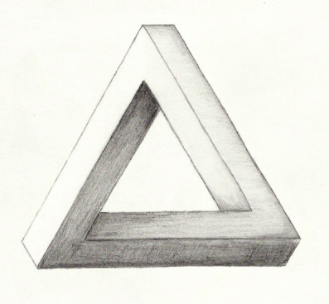The Model of Guilt-Shame-Fear—A Short History

The idea of “guilt vs. shame” has a long history in 20th-century scholarship (see previous post). But how did the cultural model of guilt-shame-fear develop? Here is a super short history of the cultural trichotomony.
In 1954, Christian anthropologist and linguist Eugene Nida in Customs and Cultures mentions, “We have to reckon with three different types of reactions to transgressions of religiously sanctioned codes: fear, shame, and guilt.” This is the first known mention of guilt-shame-fear, but Nida offers no further explanation.
Psychologists in the 1960’s began to write about the internal aspects of guilt, shame, and anxiety. David Augsburger (Professor of Psychology/Counseling at Fuller) expounded the categories in several of his publications, including Conflict Mediation Across Cultures (1986). Here is his explanation:
“Anxiety, shame, and guilt are the normal and sequential control processes that emerge in the first, second, and third years of a child’s development in every culture. Each culture has its own balanced and its own integrative hierarchy of these internal controls. Tribalistic cultures are dominated by the fear/anxiety motive. Individualistic cultures generally seek to minimize anxiety and shame while socializing the child to have more of a guilt orientation, while many collectivistic cultures generally tend to encourage a shame orientation. … The three function together, although the intensity of each influence varies significantly from culture to culture.” (pp. 82, 126)
Charles Kraft’s Perspectives article titled “The 3 Encounters of Christian Witness” (adapted from his 1991 EMQ article) speaks about ministry approaches in terms of “truth,” “power,” and “allegiance” encounter. Doug Hayward reaches similar conclusions in “The Evangelization of Animists: Power, Truth or Love Encounter?” IJFM (1997). Though they do not use the language of guilt-shame-fear, the overlap with their categories is remarkable.
Roland Muller’s book Honor & Shame: Unlocking the Door (2001) expanded and popularized the notion guilt, shame, and fear cultures for Christian ministry. Though Muller’s book focuses on Muslim evangelism, it has notably influenced practitioners and missiologists.
My publication of The 3D Gospel: Ministry in Guilt, Shame, and Fear Cultures (2014) sought to outline a biblical/systematic theology and some ministry approaches for engaging each culture type.
There you have it—a super short history of the guilt-shame-fear cultural paradigm! Any others works worth mentioning? Please share in a comment below.
Read more posts in this series “Guilt-Shame-Fear: Revisited“.

Your post “The Model of Guilt-Shame-Fear—A Short History” was very helpful and to the point. I am better informed for having read it, and it was just the right length. Well done.
Thanks George for this nice concise and accurate history of the guilt-shame-fear perspectives on culture. I first picked it up for Roland Muller’s work and began using it around 2004, which was my go to source till your 3D Gospel came out. Understanding these concepts has not only been helpful with missions to other peoples but in working among our missions teams who are now often multicultural in background. I think 3D Gospel should be read by Christians in any context, not just missionaries.
In wider spread written documents, true. But the use of power in evangelism has a long history, e.g., in New Tribes Missions’ Brown Gold and Pacific Challenge. Would be fun to trace oral uses of it back through Practical Anthropology when dealing with animistic societies, not to mention Scripture.
My introduction to Shame as a defining dimension of life when we fail occurred in the late 70’s. A Jewish Psychiatrist and I collaborated with a Patient from India and I focused on he Guilt. He suggested I examine the issue as Shame rather than Guilt. I then read the Psychiatric literature on each.
In 1978 I met Lutheran theologian James Kalal’s who lectured on the ideas around “Bondage, Rebellion, and Guilt as the 3 Streams of Fallen Nature and the Atonement.”
I added Shame as a fourth stream in I wrote about it In a 1983 book on integrating Cognitive Therapy and scripture.